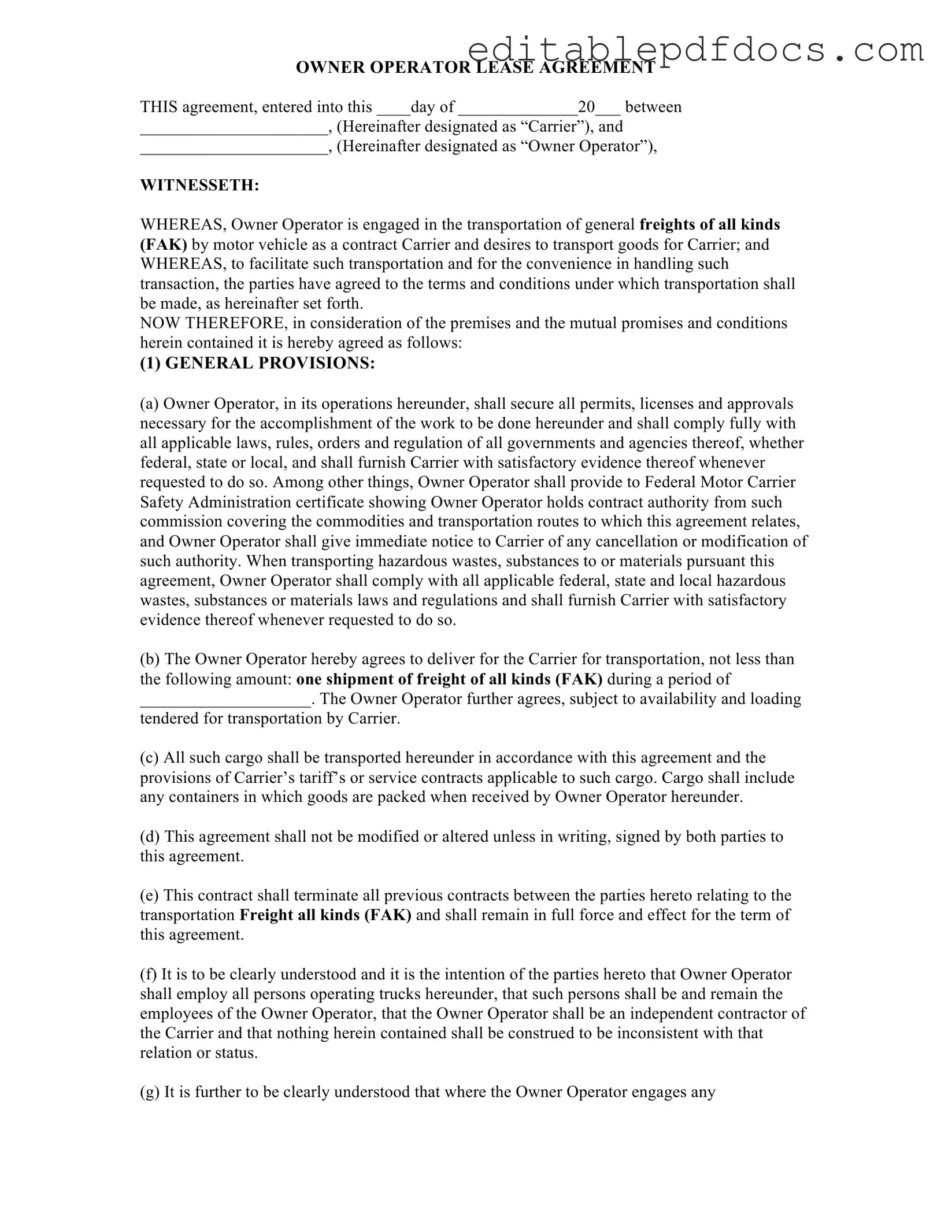Filling out the Owner Operator Lease Agreement form can be a straightforward process, but several common mistakes can lead to complications. One frequent error occurs when individuals fail to provide accurate dates in the designated spaces. For instance, leaving the date blank or entering an incorrect year can render the agreement invalid. It's essential to ensure that the date reflects the actual day the agreement is signed.
Another common mistake is neglecting to include the full legal names of both parties involved. Many people abbreviate names or use nicknames, which can create confusion later. The form should clearly state the full legal name of the Carrier and the Owner Operator to avoid any ambiguity regarding the parties involved in the agreement.
Inaccurate or incomplete information regarding permits and licenses is also a significant pitfall. The Owner Operator must provide evidence of all necessary permits, licenses, and approvals as required by law. Failing to do so may lead to legal repercussions or disputes over compliance. It's advisable to double-check that all required documentation is current and accurately referenced in the agreement.
Furthermore, misunderstanding the obligations related to cargo can lead to problems. Some individuals overlook the specific terms regarding the types of cargo to be transported. The Owner Operator must ensure that they are fully aware of the commodities they are authorized to carry and that these are correctly listed in the agreement. Miscommunication about cargo types can result in liability issues or delays in transportation.
People often forget to address the confidentiality clause adequately. This section is crucial for protecting sensitive information about the Carrier's business. If the Owner Operator does not acknowledge this requirement, they may inadvertently disclose confidential details to third parties, which could lead to legal ramifications.
Another mistake involves the insurance requirements outlined in the agreement. Many Owner Operators either misinterpret these requirements or neglect to provide the necessary documentation proving their insurance coverage. Ensuring compliance with the insurance obligations is vital for protecting both parties against potential liabilities that may arise during the course of the agreement.
In addition, some individuals fail to retain copies of signed receipts for deliveries. The agreement stipulates that Owner Operators must keep these receipts for at least two years. Not adhering to this requirement can complicate matters should any disputes arise regarding deliveries or damages.
Lastly, not seeking clarification on ambiguous terms can lead to misunderstandings later. The Owner Operator should thoroughly read the agreement and ask questions about any sections that are unclear. This proactive approach can prevent potential conflicts and ensure that both parties have a mutual understanding of their obligations.
